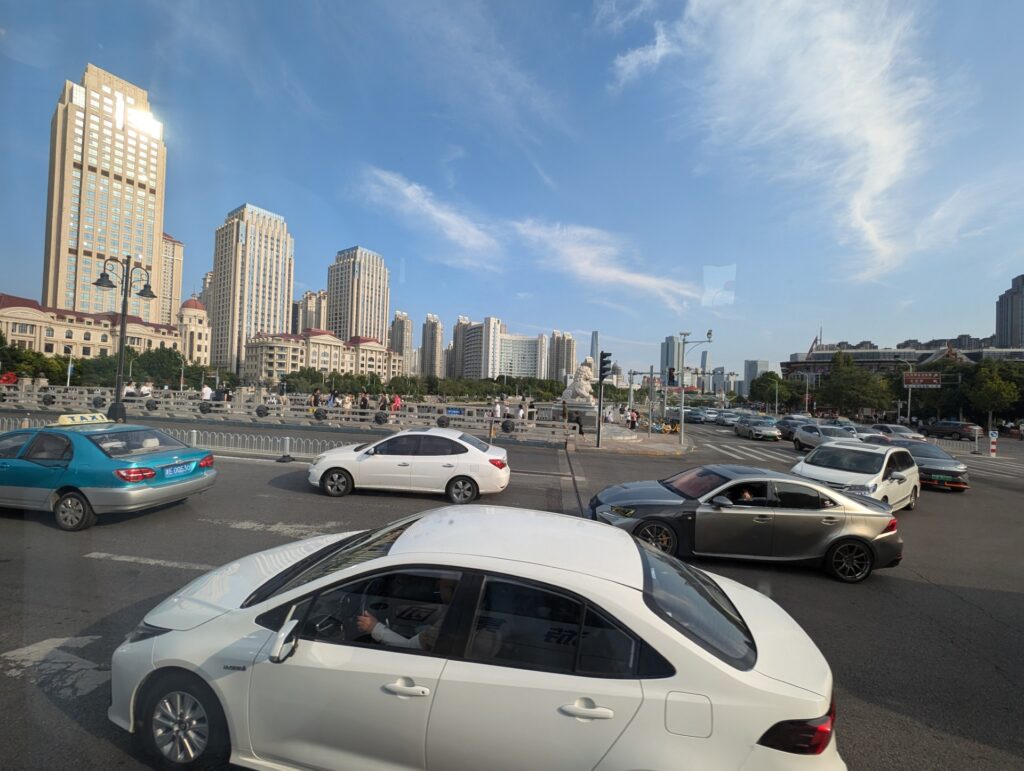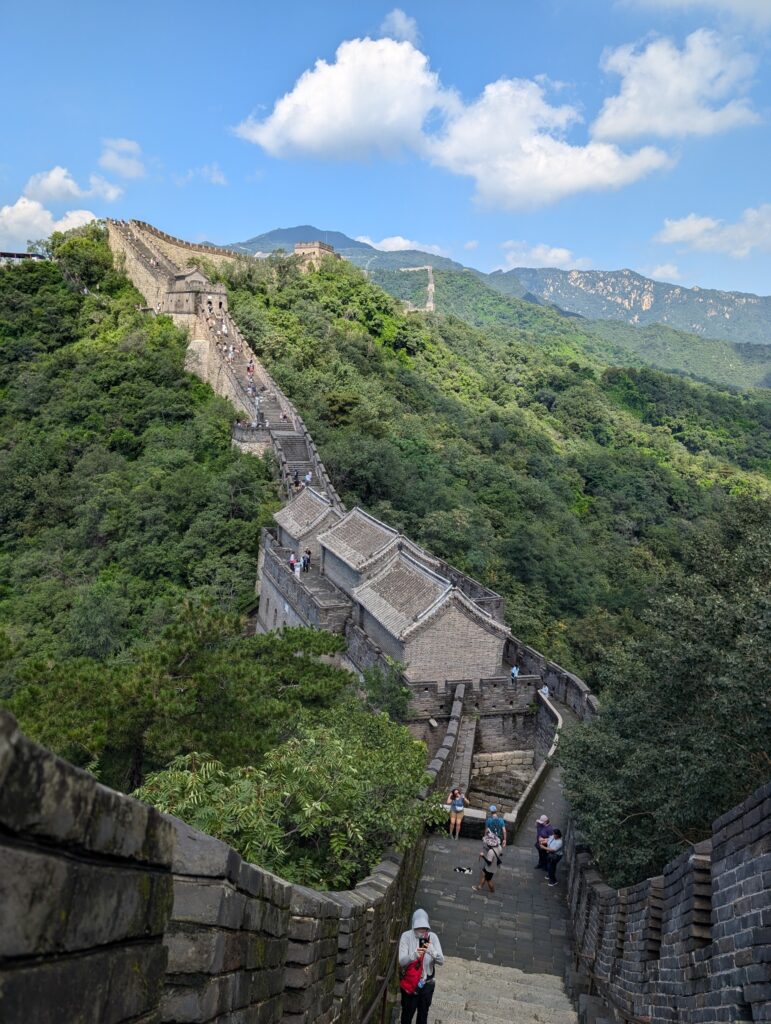
While I had many opportunities for experiential learning within the assignments and my coursework, as well as participating in my practicum, the best experiential learning opportunity I had in this degree was a study abroad trip to China. One of my professors was asked by the government of China to visit the country. He agreed, but only if he would be allowed to bring students. I was one of the students asked to participate in this valuable experiential learning trip.
I understood the purpose of the trip to be the Chinese government’s desire to show us how they are working to promote minority groups’ culture throughout the country. With this purpose in mind, we were toured around various cultural and tourist sites, visited universities, and were hosted by families who had benefited from government programs.
The rich and ancient culture in China is in stark contrast to the newness of Canadian multiculturalism. As we spent the first few days being whisked to tourist site after tourist site, I had difficulty fathoming the work that went into creating places like the Temple of Heaven, the Forbidden Palace, and the Great Wall of China. In HRSJ 5130: Body Rights: Systems and Social Movements, we discussed and analyzed migrant domestic workers and migrant farm workers and the effects the work they do has on their bodies. The work these people perform is temporally in the modern world and has some basic, if low, standards which apply to governing the workers’ safety and well-being. At the time the impressive Chinese structures were built, there were no such regulations to protect the workers. Our tour guide remarked that the Great Wall of China is the world’s longest grave site because of all the bodies buried under it due to the unsafe working conditions. There is a rock garden inside the Forbidden Palace with a similar story.
We visited Tiananmen Square, which is probably to the West the most well-known site of Chinese social justice action. We understand it to be the site of student’s political demonstrations in the 1980s. While the Tiananmen Square Massacre was a massive event of political and social justice importance, it is not the only protest for social justice that has occurred there. The square is an important historical site to the Chinese people as it houses monuments, a museum, and a mausoleum. It acts as a tourist destination with high-level security to prevent future demonstrations from becoming violent.
We were taken to museums and given private tours, but other than looking to the past, we were also shown the future of China. We visited farms, both big and small. One small farm’s owner hosted us for a meal and talked about his status as a member of an ethnic minority and how he had received government grants to improve his farm and livelihood. Another farm produced figs and boasted thousand-year-old fig trees. It was designed to be a destination of agricultural tourism. Busloads of people came from all over the place to walk around the farm, taste its product, and buy souvenirs. One further farm we visited was so large that it appeared to be a factory from the outside. The large building was indeed a factory, producing melons and other fruits with the help of advanced robotics.
Another future for China where technology is important is in the automotive industry. We visited a car dealership and were introduced to electronic vehicles that are so advanced, I thought they were concept cars. They are, however, mass-produced and are just as popular in China as a Ford or Chevrolet in America. I learned that high tariffs have prevented their infiltration into North American markets. The Chinese enjoy lifetime battery replacements, extremely quick charging times, and extended ranges before the need to recharge. Without the tariffs, I calculated the exchange rate on these vehicles to place them in a very reasonable price-range for consumers in North America. In all honesty, at this time I’m considering a trip to one of their plants in Mexico to purchase one for personal use. The cost of the tariff still seems reasonable for the technology and benefits gained.
The low-tech future of China was fascinating as well. We received a tour of a comprehensive bonded zone. I wasn’t quite sure what that was at first. It appeared to be a very empty shopping mall with vast amounts of equally empty factory real estate, and the skeleton of a city-to-be surrounding it. It soon became clear that it was the future site of production and duty-free trade. The government had built it and were just waiting for the people to come. I have full confidence that they will come, too.
While I cannot possibly relate every experience we had on the trip and how it relates to my experiential learning about human rights and social justice, what the trip taught me is how big the world is. There is so much more going on out there than I could have possibly imagined. The world is so much bigger than I had previously thought. I experienced a culture that is so drastically different from the one where I lived and was raised. The human rights issues that are faced by those in other countries compound a problem for me that was already too massive to comprehend. I came home overstimulated and overwhelmed.
I already felt that human rights and social justice were topics that were too big to be solved. The problems were wicked, requiring coordinated solutions on multiple fronts. I felt (and feel) too small to be of significance. I spent the rest of my time in my studies looking for the small ways to make a difference. I sought out the small steps to change. I focussed my attention on local, person-to-person initiatives that matter to individuals. The experience taught me that the world will go on no matter what. For me to see a shift in human rights and social justice, I need to affect those close to me; I need to work with small groups and individuals in my back yard. The learning I gained from world travel brought me closer to home and focused my goals.
